Click above for more high-res images of the Aprilia RSV 1000 R
When the sportbike discussion inevitably turns to outright performance, the Aprilia RSV 1000R is usually left out of the equation. It is true that the Italian bike is down on horsepower when compared with its racier relatives from Ducati and especially against the inline four machines from the Japanese manufacturers. While the Big Four from Japan continuously improve their unique (but very similar) breed of liter-class sportbikes with completely new designs every few years, Aprilia has sat back and made very small and incremental changes to its V-Twin contestant, and though its acceleration is surely a tick or two behind the leaders, it is important to consider the fact that everything is relative in the world of liter-bikes. Remember, barring something truly special, any liter-class sportbike from the last decade is sure to be the quickest vehicle on any given road. So, what does the Aprilia offer to make up for its apparent lack of horsepower? Read on.
When the sportbike discussion inevitably turns to outright performance, the Aprilia RSV 1000R is usually left out of the equation. It is true that the Italian bike is down on horsepower when compared with its racier relatives from Ducati and especially against the inline four machines from the Japanese manufacturers. While the Big Four from Japan continuously improve their unique (but very similar) breed of liter-class sportbikes with completely new designs every few years, Aprilia has sat back and made very small and incremental changes to its V-Twin contestant, and though its acceleration is surely a tick or two behind the leaders, it is important to consider the fact that everything is relative in the world of liter-bikes. Remember, barring something truly special, any liter-class sportbike from the last decade is sure to be the quickest vehicle on any given road. So, what does the Aprilia offer to make up for its apparent lack of horsepower? Read on.
All photos copyright Jeremy Korzeniewski / Weblogs Inc.
Let's start with the engine, as it's easily the most identifiable part of the RSVR. Aprilia has been using Rotax-designed and built sixty-degree V-Twin engines for as long as it's been making sportbikes, and the mill has seen countless revisions since its inception in the late nineties. When it was first introduced, the original Mille was quite a machine and had little problem keeping up with its closest competition. Today, though, the V60 Magnesium engine is down by at least twenty-five horsepower to its main rivals, which is likely enough to keep it entirely out of contention for many. Indeed, those concerned only with outright acceleration may as well stop reading here.
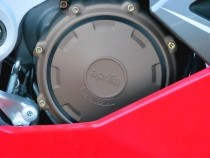
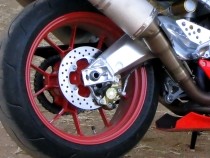
Those who realize that a buck-twenty-five is still lots of power at the rear wheel will be rewarded with a powerplant that's quite refined. Right from idle, the fueling works well, though there is plenty of noise emanating from the crankcases at low RPMs. Unlike some inline fours, power builds in a mostly linear manner right on up to around 10,000 RPM, and there are more than enough ponies on tap to keep things very interesting on the street. There's not much need to rev past that power peak unless you see a corner coming up real quick and need the thousand RPM left for over-rev.
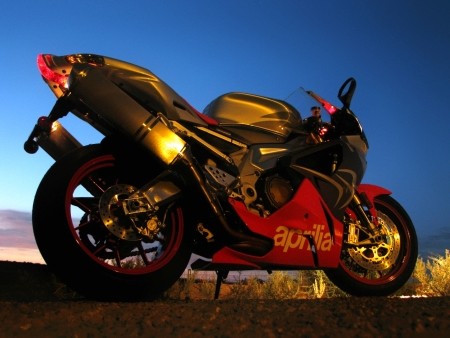
The chassis of the Aprilia truly shines and is never outdone by the powerplant. Grippy seventeen-inch tires are spooned on cast alloy rims. Step up to the Factory model for forged hoops along with many other niceties. Aprilia has nailed the RSV's handling dynamics and the it has classic sportbike geometry. Low bars and high-set pegs conspire to make the bike highly uncomfortable when running errands or commuting to work. Of course, that's not where any sporty liter bike is meant to play. When the roads turn twisty, the Aprilia comes into its own. Cornering clearance is plentiful and we never felt any hard parts touch down despite our best efforts to meet the limits.
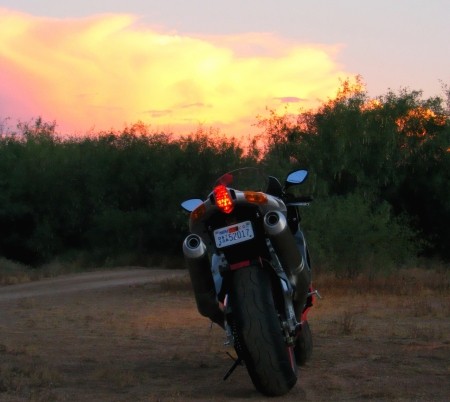
High-quality components abound. The Öhlins fork, adjustable for compression and rebound damping and preload, features TiN (Titanium Nitride) coated stanchions. That high-spec bit hanging off the frame both looks racy and works very well. The rear shock is adjustable for preload, compression and rebound. The rear end is actually height-adjustable, though we set it at the highest setting and left it for the duration of our testing. Brembo Triple Bridge radial front brake calipers clamp down hard on the dual 320 mm floating steel discs and make up for a very dead-feeling rear brake. We just forgot the rear brake existed completely unless we needed to make a correction mid-turn and didn't want to stand the bike back up.
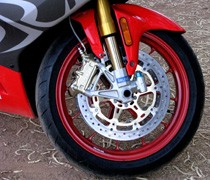
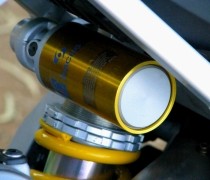
We received plenty of compliments from casual passers-by, which proves that the Aprilia is still a looker. As increasingly complex shapes come from motorcycle styling departments, the Aprilia's classic good looks stand out. The most controversial view of the bike is from the front. Blocky, angular headlights bookend the gaping air scoop, which is ducted back to the large 10.3-liter airbox. While that ram air passageway may dominate the front view, its placement is dictated by the available high air pressure at the leading point of the bike.
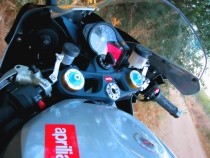
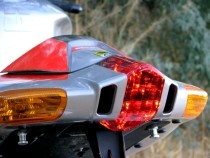
We very much enjoyed the time we spent with the RSV 1000 R. Once the rider comes to grips with the fact that he's not riding the fastest bike on the street, there really is nothing not to like. Those who demand class-competitive power, however, should consider holding out for the Italian manufacturer's forthcoming V4-powered superbike. Now that Aprilia is flush with cash from its Piaggio takeover, the relative newcomer should have the cash on hand to match wits with the best from Ducati and Japan Inc. Considering the quality piece that the current RSV 1000 R is, we truly look forward to what comes next.
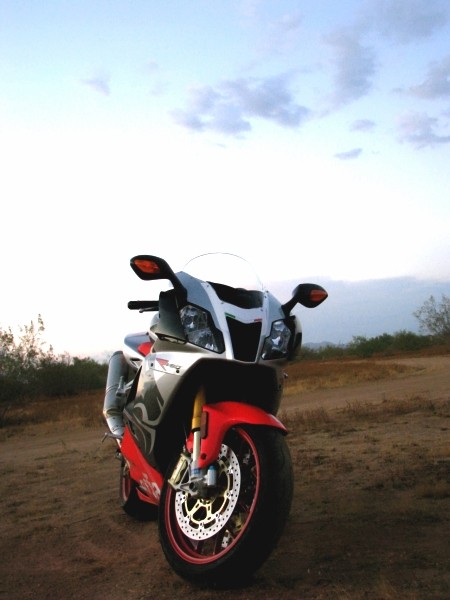
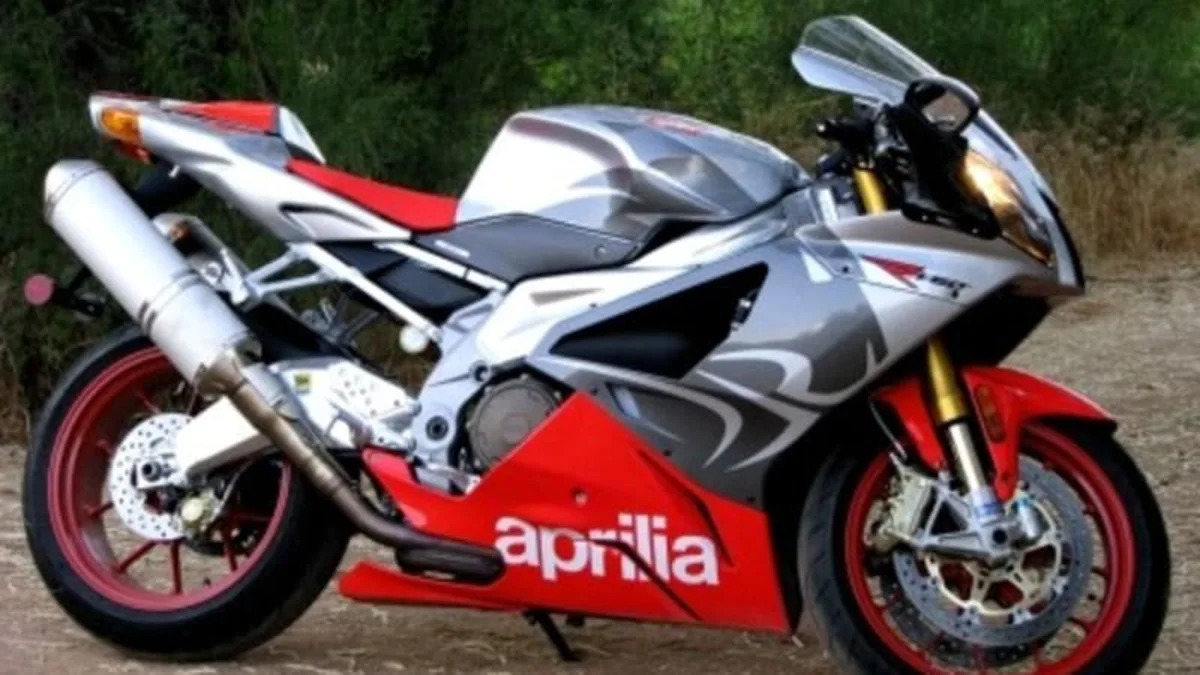

Sign in to post
Please sign in to leave a comment.
Continue